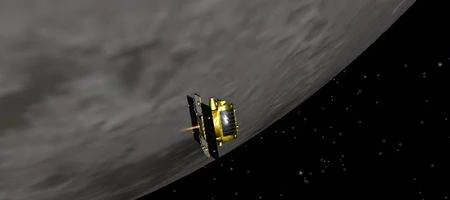As planned, NASA’s two Grail spacecraft crashed into the moon yesterday afternoon, hitting a mountain at about 2:28 pm.

The probes, named Ebb and Flow, hit the southern face of the 1.5 mile-high mountain near a crater named Goldschmidt at a speed of 3,760 mph, or about 1.7 kilometers per second.
Because the site was in shadow at the time of impact, there’s unfortunately no imagery.
Fifty minutes before the impact, the spacecraft fired their engines until their propellant was depleted, in a maneuver designed to determine precisely how much fuel was left in the tanks. The aim of this was to help NASA engineers validate their computer models and tighten up their predictions of fuel needs for future missions.
“Ebb fired its engines for 4 minutes, 3 seconds and Flow fired its for 5 minutes, 7 seconds,” says Grail project manager David Lehman of NASA’s Jet Propulsion Laboratory. “It was one final important set of data from a mission that was filled with great science and engineering data.”
The team reckons that much of the material aboard each spacecraft was broken up during impact, and that most of what remains probably is buried in shallow craters.
The site, near the lunar north pole, has been named Sally K Ride Impact Site in honor of the late astronaut, who was America’s first woman in space and a member of the probes’ mission team.
“Sally was all about getting the job done, whether it be in exploring space, inspiring the next generation, or helping make the GRAIL mission the resounding success it is today,” says Grail principal investigator Maria Zuber of MIT.
“As we complete our lunar mission, we are proud we can honor Sally Ride’s contributions by naming this corner of the moon after her.”
Launched in September last year, Ebb and Flow had been orbiting the moon since January 1, 2012. Since then, the data they returned has been used to generate the highest-resolution gravity field map of any celestial body, giving a better understanding of how Earth and other rocky planets in the solar system formed and evolved.






